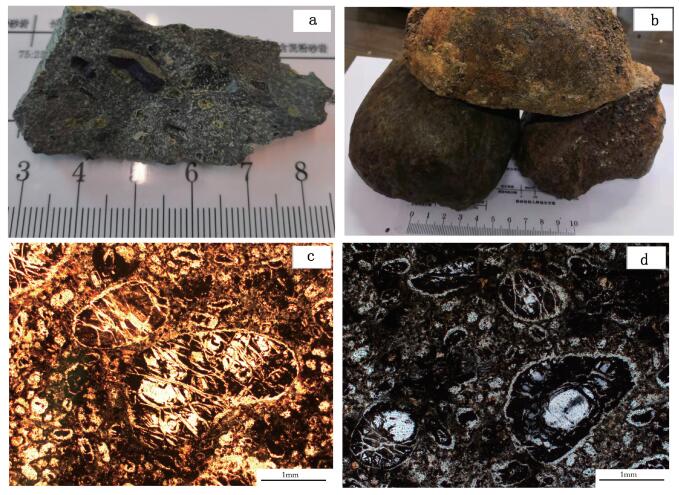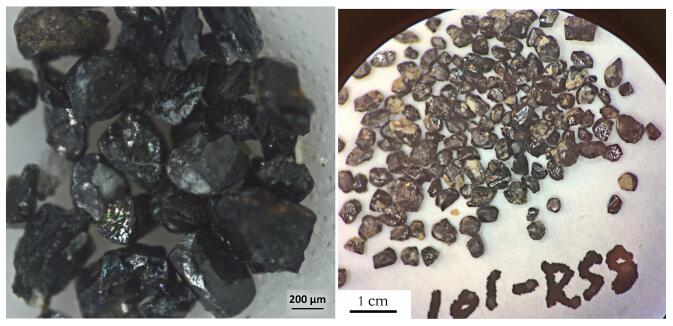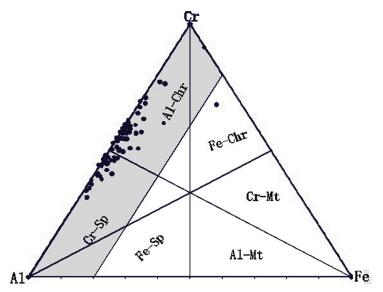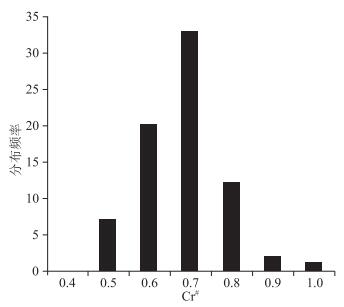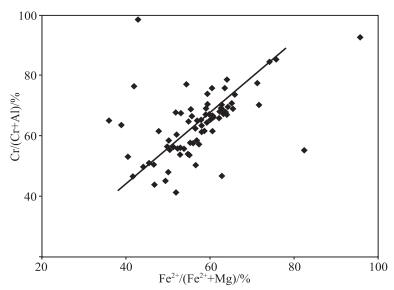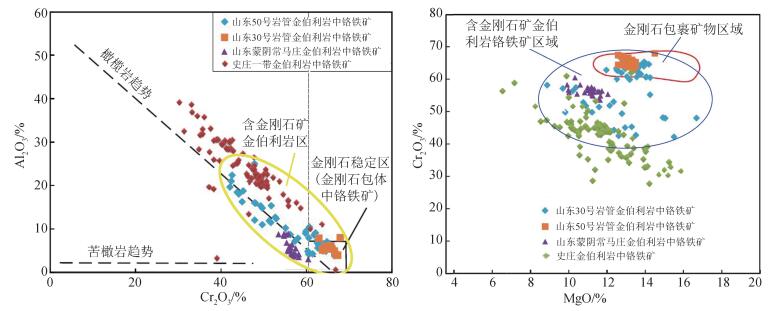Research progresses on marine sandstone copper deposit and some existent problems A comparative study of the Katanga copper mine in Central Africa and the Dongchuan copper mine in Yunnan
-
摘要:
海相砂岩型铜矿床是世界铜矿床主要类型之一,多产于新元古代和二叠纪的大型沉积盆地中。矿体通常呈层状、似层状赋存于碎屑岩或海相碳酸盐岩地层中,具多层位成矿特征。根据海相砂岩型铜矿的研究现状,从成矿物质来源和成矿流体性质、来源、运移、金属元素的沉淀机制等方面,综述中非加丹加铜矿带和云南东川铜矿带近年的研究成果,发现盆地卤水成矿模式逐渐替代了原来的沉积-改造模式,具有后生成矿特征。2个铜矿带属于元古宙砂页岩-白云质碳酸盐岩-黑色炭质页岩含铜建造,矿体具明显层控特征,受褶皱、断层和角砾岩的控制。通过2个铜矿带的含矿建造、矿化特征等对比,发现东川铜矿与中非加丹加铜矿有高度的相似性,具有盆地卤水成矿模式的特征。最后对海相砂岩型铜矿和东川铜矿的成因类型、成矿机制、流体来源等问题进行了讨论。
Abstract:Marine sandstone-hosted copper deposits constitute one of the most important copper deposits in the world, and most of them occur in giant Neoproterozoic and Permian sedimentary basins.The orebodies are usually stratified and stratoid in clastic or marine carbonate rock formations with multi-layered metallogenic characteristics.Based on the research status of marine sandstone-hosted copper deposits, the authors reviewed the research results of the Katanga copper belt and the Dongchuan copper belt discovered in recent years in the aspects of metallogenic material source, metallogenic fluid property, source, transportation and metal element precipitation mechanism, and found that the basin-brine-metallogenic model of epigenetic mineralization has gradually replaced the original sedimentary-transform model.Two copper deposit belts belong to the Proterozoic sand shales-dolomitic carbonate-black carbonaceous shales.The orebody has obvious stratigraphic characteristics, and is controlled by fold, fault and breccia.A comparison of the two copper belts in the aspects of ore-bearing structure and mineralization characteristics reveals that the Dongchuan copper deposit has a high degree of similarity to the Katanga copper deposit in that they both have the characteristics of basin-brine-metallogenic model.Then, the existing problems in the study of genetic type, metallogenic mechanism and fluid source from marine sandstone copper deposit and the Dongchuan copper deposit are discussed.
-
豫南一带分布金伯利岩体群,出露于华北陆块南缘,岩石中含有纯橄榄岩、斜方辉橄岩等地幔深源包体,普遍含有尖晶石、铬透辉石、含铬镁铝榴石等金刚石的指示矿物,岩体主要呈北西西走向分布,产状为岩管、岩墙和岩脉状[1-5]。目前对区内金伯利岩研究程度较低,尤其对其中的金刚石指示矿物未进行过系统的研究。本次根据野外工作成果,在史庄一带用人工重砂选获了一批尖晶石等金刚石的指示矿物,通过电子探针分析对尖晶石的种属进行了划分,根据尖晶石矿物化学成分特征,探讨其对金刚石原生矿的指示意义。
1. 地质背景
1.1 区域地质背景
研究区位于华北陆块南缘,华北板块具有稳定的结晶基底和平缓的沉积盖层,是发育较厚岩石圈的地域,具备形成金刚石所需要的深度和保存条件;其南侧为栾川-明港深大断裂带,该断裂深达地幔,可构成深源岩浆上升的通道②(图 1)。
![]() 图 1 豫南史庄一带区域地质构造简图(据参考文献①修改)Figure 1. The sketch map of regional geological structure in Shizhuang area, southern He'nan Province
图 1 豫南史庄一带区域地质构造简图(据参考文献①修改)Figure 1. The sketch map of regional geological structure in Shizhuang area, southern He'nan Province区内岩浆岩较发育,各个地质时期均有不同程度的岩浆活动,从超基性-基性到中性-酸性岩均有出露;其新元古代周庄变基性岩、早古生代黄岗杂岩、晚白垩世天目山岩体,以及围绕天目山岩体出露的金伯利岩群等分布较广泛。
史庄地区出露地层主要为长城系熊耳群、蓟县系汝阳群和新元古界栾川群。熊耳群为一套高绿片岩相的海相中基性-中酸性火山熔岩,岩石组合为斜长角闪片岩、黑云斜长片岩、白云石英片岩等。汝阳群为一套低绿片岩相变质的滨海-浅海陆源砂泥质碎屑岩沉积系,岩石组合为石英岩、白云石英片岩、钾长浅粒岩和大理岩。栾川群为一套滨-浅海相碱性火山岩-碳酸盐岩组合,岩石组合为白云钾长片(麻)岩、钾长浅粒岩、白云石英片岩及大理岩。
区内构造复杂多样,断裂和皱褶构造均有发育。断裂构造主要为栾川-明港深大断裂带及与主构造线一致的北西西—南东东向或近东西向的韧性-脆韧性断裂、平移走滑断裂等次级断裂,北东向—北东东向脆性断裂与逆冲推覆断裂叠加,常将地层切割成菱形块状,组成复杂的网络系统。此外,华北陆地南缘石滚河褶断带及其次级皱褶较发育,褶皱主体表现为轴面近直立或略向北东倾斜,枢纽倾向为北西西或南东东向,卷入褶皱的地层核部为熊耳群,翼部由栾川群组成,其北翼地层出露完整,与石滚河复向斜的南翼相连;南翼被周庄变基性岩和天目山正长花岗岩体侵入。
1.2 金伯利岩石地质特征
史庄一带金伯利岩体分布广泛,成群出现,多以岩管和岩脉形式产出。岩石类型主要有斑状金伯利岩、含角砾金伯利岩和角砾状金伯利岩;岩石普遍遭受了十分强烈的蛇纹石化、绿泥石化、绿帘石化、碳酸盐化、滑石化等蚀变。
金伯利岩常呈暗绿色,浅灰色,灰绿色,具斑状结构、卵斑结构,基质具隐晶微晶结构,块状构造、岩球状构造,斑晶成分主要为假象橄榄石、橄榄石,次为假象石榴子石、金云母及磁铁矿、钛铁矿、铬铁矿、磷灰石、透辉石等矿物。金伯利岩中角砾含量变化较大,一般为10%~50%,岩体外围角砾含量达80%;角砾成分分为两类:一类来源于深部地壳和地幔的捕虏体、捕虏晶,主要成分为纯橄榄岩、石榴辉橄岩、榴辉岩、辉长岩、煌斑岩等,代表了岩浆源区和深源的岩石矿物特征;另一类角砾为围岩角砾,与围岩成分有关,主要为片(麻)状二长花岗岩、斜长角闪片岩、白云斜长(二长)片麻岩、大理岩等(图 2)。
2. 样品特征及测试条件
2.1 样品特征
本区尖晶石主要分布在金伯利岩和地幔包裹体(榴辉岩、橄榄岩等)中,在金伯利岩中尖晶石呈粗晶和基质产出,粗晶尖晶石均有不同程度的磨损,80%以上的尖晶石磨损较强烈,呈浑圆粒状,常发育以磁铁矿为主要成分的次反应边,是源于地幔,金伯利岩浆上升过程中的捕虏晶,为本次研究的主要对象。尖晶石原始晶形呈八面体,后经熔蚀磨损呈浑圆、粒状,黑色,具褐色薄膜,无解理,半金属光泽,断口不平坦,断口处为沥青光泽,粒径一般为0.1~5 mm(图 3)。
2.2 测试方法
本次对豫南史庄一带金伯利岩中的75个尖晶石族矿物单晶样品进行了电子探针波谱微区化学成分分析。样品经过处理后制作成标准的电子探针靶,并磨抛至矿物露出表面,然后进行微区分析。
本次矿物电子探针分析在中国地质调查局天津地质调查中心试验测试室完成,使用仪器为日本津岛公司生产的EPMA-1600型电子探针仪。测试条件为:温度24℃,湿度25%,加速电压15 kV,工作电子束流为20 nA,束斑直径为5 μm,分析元素范围为4Be~92U。分析及计算结果见表 1。
表 1 史庄一带金伯利岩中尖晶石电子探针分析结果及主要阳离子系数Table 1. Electron microprobe analyses of spinel from kimberlite in Shizhuang area and calculation results of main cation coefficients% 编号 1 2 3 4 5 6 7 8 9 10 11 12 13 14 15 16 17 18 19 Na2O 0.04 0.05 0.04 0.00 0.01 0.02 0.00 0.05 0.03 0.05 0.00 0.03 0.00 0.02 0.34 0.03 0.00 0.01 0.09 MgO 15.33 11.60 10.48 10.61 10.59 14.11 11.49 10.90 10.92 12.57 15.25 10.11 13.16 13.89 7.14 11.89 11.33 10.84 13.97 Al2O3 32.83 24.27 21.37 21.67 22.22 30.27 23.42 21.46 20.61 26.27 32.96 19.86 19.30 18.81 10.60 23.30 22.07 21.21 29.72 SiO2 0.06 0.07 2.72 0.08 0.01 0.21 0.10 0.14 0.06 0.15 0.08 0.13 0.10 0.11 0.15 0.05 0.05 0.01 0.21 K2O 0.04 0.01 0.01 0.00 0.00 0.01 0.01 0.01 0.02 0.03 0.01 0.01 0.00 0.00 0.22 0.01 0.00 0.00 0.00 CaO 0.02 0.00 0.04 0.01 0.02 0.01 0.03 0.03 0.03 0.02 0.02 0.03 0.02 0.01 0.04 0.01 0.00 0.01 0.00 TiO2 0.01 0.05 0.07 0.08 0.02 0.01 0.05 0.00 0.03 0.02 0.04 0.01 0.03 0.00 0.03 0.01 0.08 0.09 0.20 Cr2O3 32.60 43.96 43.27 44.41 46.72 39.06 46.42 48.05 49.42 43.81 34.30 45.94 33.99 35.05 58.72 43.79 44.90 45.31 38.45 MnO 0.22 0.29 0.21 0.33 0.37 0.22 0.31 0.25 0.30 0.27 0.21 0.33 0.18 0.22 0.50 0.31 0.25 0.37 0.24 FeO 12.12 16.85 18.67 18.20 11.42 14.05 17.90 15.78 15.96 16.43 12.74 18.16 8.39 7.84 20.47 16.29 17.40 17.96 14.71 Fe2O3 2.86 0.02 0.00 1.77 0.00 0.00 0.00 0.00 0.00 0.00 1.06 1.45 4.34 6.04 1.77 1.59 1.62 2.34 0.88 以4个氧原子为基础的阳离子数 Mg2+ 0.69 0.54 0.50 0.51 0.53 0.63 0.53 0.52 0.52 0.57 0.68 0.49 0.74 0.76 0.36 0.56 0.54 0.52 0.63 Al2+ 1.16 0.90 0.81 0.82 0.88 1.07 0.86 0.81 0.78 0.94 1.16 0.77 0.86 0.81 0.42 0.87 0.83 0.80 1.05 Cr3+ 0.77 1.09 1.09 1.13 1.25 0.93 1.14 1.22 1.25 1.05 0.81 1.19 1.01 1.01 1.56 1.09 1.13 1.14 0.91 Fe2+ 0.30 0.44 0.50 0.49 0.32 0.35 0.46 0.42 0.43 0.42 0.32 0.50 0.26 0.24 0.57 0.43 0.46 0.48 0.37 Fe3+ 0.07 0.00 0.00 0.04 0.00 0.00 0.00 0.00 0.00 0.00 0.02 0.04 0.12 0.17 0.04 0.04 0.04 0.06 0.02 Mg/(Mg+Fe2+) 55.84 40.77 35.96 36.84 48.11 50.11 39.08 40.85 40.62 43.34 54.50 35.76 61.07 63.91 25.86 42.19 39.43 37.65 48.71 Fe2+/(Fe2++Mg) 44.16 59.23 64.04 63.16 51.89 49.89 60.92 59.15 59.38 56.66 45.50 64.24 38.93 36.09 74.14 57.81 60.57 62.35 51.29 Cr/(Cr+Al) 49.83 64.43 66.94 67.21 67.77 56.34 66.46 69.13 70.57 62.52 51.00 69.81 63.79 65.07 84.70 65.28 67.04 68.11 56.41 编号 20 21 22 23 24 25 26 27 28 29 30 31 32 33 34 35 36 37 38 Na2O 0.00 0.13 0.03 0.03 0.11 0.00 0.01 0.01 0.01 0.93 0.36 0.26 0.12 0.07 0.21 0.08 0.21 0.27 0.17 MgO 9.89 12.08 10.11 13.24 13.23 11.63 14.01 8.24 14.71 9.23 12.61 15.16 12.34 8.50 12.09 5.57 14.13 10.26 11.40 Al2O3 20.60 24.90 19.14 29.25 0.01 22.32 30.19 14.86 36.71 19.38 29.35 38.55 28.28 19.76 28.13 27.43 35.64 20.10 15.70 SiO2 0.02 1.07 0.06 0.11 0.12 0.03 0.05 0.04 0.05 0.16 0.28 0.16 0.27 0.85 0.07 0.39 0.15 0.06 0.20 K2O 0.00 0.03 0.01 0.00 0.14 0.01 0.00 0.00 0.00 0.08 0.23 0.02 0.02 0.01 0.05 0.02 0.05 0.05 0.06 CaO 0.02 0.25 0.01 0.01 0.35 0.02 0.01 0.02 0.02 0.06 0.12 0.01 0.05 0.04 0.02 0.12 0.10 0.03 0.04 TiO2 0.00 0.12 0.30 0.07 1.60 0.12 0.00 0.05 0.03 0.06 0.01 0.00 0.01 0.12 0.00 0.05 0.01 0.31 0.02 Cr2O3 46.59 40.28 46.76 36.82 61.74 45.97 37.45 51.34 30.32 45.29 37.05 30.12 38.83 46.77 38.32 34.11 32.92 44.30 53.07 MnO 0.27 0.25 0.38 0.23 0.31 0.32 0.26 0.48 0.22 0.36 0.24 0.21 0.24 1.21 0.22 0.99 0.24 0.28 0.28 FeO 16.60 17.15 18.97 15.41 9.96 17.22 14.23 20.41 14.32 15.64 13.85 13.33 15.20 21.57 15.34 25.80 14.14 17.58 13.67 Fe2O3 0.00 1.48 2.56 2.04 6.45 1.21 0.87 1.44 1.00 5.41 1.63 0.78 0.00 0.36 0.88 1.72 0.18 4.19 0.00 以4个氧原子为基础的阳离子系数 Mg2+ 0.49 0.56 0.49 0.60 0.71 0.54 0.63 0.41 0.64 0.45 0.58 0.65 0.58 0.41 0.57 0.27 0.62 0.49 0.57 Al2+ 0.81 0.91 0.73 1.05 0.00 0.82 1.08 0.59 1.27 0.75 1.07 1.31 1.04 0.75 1.04 1.06 1.24 0.77 0.62 Cr3+ 1.23 0.99 1.19 0.89 1.75 1.14 0.90 1.37 0.70 1.17 0.91 0.68 0.96 1.19 0.95 0.88 0.77 1.13 1.40 Fe2+ 0.46 0.45 0.51 0.39 0.30 0.45 0.36 0.58 0.35 0.43 0.36 0.32 0.40 0.58 0.40 0.70 0.35 0.48 0.38 Fe3+ 0.00 0.03 0.06 0.05 0.18 0.03 0.02 0.04 0.02 0.14 0.04 0.02 0.00 0.01 0.02 0.04 0.00 0.10 0.00 Mg/(Mg+Fe2+) 37.33 41.33 34.76 46.21 57.05 40.31 49.61 28.75 50.68 37.12 47.66 53.22 44.82 28.26 44.08 17.74 49.97 36.85 45.47 Fe2+/(Fe2++Mg) 62.67 58.67 65.24 53.79 42.95 59.69 50.39 71.25 49.32 62.88 52.34 46.78 55.18 71.74 55.92 82.26 50.03 63.15 54.53 Cr/(Cr+Al) 69.34 61.80 70.96 55.73 100.00 67.32 55.36 77.55 45.24 70.04 55.80 43.86 57.87 70.30 57.67 55.43 48.02 68.79 77.17 编号 39 40 41 42 43 44 45 46 47 48 49 50 51 52 53 54 55 56 57 Na2O 0.21 0.49 0.54 0.58 0.58 0.46 0.47 0.18 0.44 0.38 0.14 0.19 0.11 0.40 0.67 0.87 0.06 0.04 0.05 MgO 10.98 9.95 11.34 13.96 8.81 13.04 11.51 10.97 6.49 10.50 12.86 10.09 14.20 10.58 10.55 12.27 9.97 12.75 12.19 Al2O3 25.74 21.95 31.40 31.68 16.69 27.74 20.55 17.54 9.61 22.37 13.04 21.27 39.07 24.30 25.49 24.92 14.46 30.39 28.26 SiO2 0.17 0.26 0.38 1.29 0.39 0.14 0.99 0.12 0.06 0.33 0.10 0.14 0.07 0.43 0.44 0.24 0.05 0.04 0.05 K2O 0.07 0.10 0.17 0.16 0.10 0.07 0.15 0.05 0.06 0.14 0.07 0.07 0.09 0.10 0.20 0.12 0.04 0.03 0.02 CaO 0.95 0.10 0.13 0.19 0.13 0.07 0.28 0.04 0.09 0.11 0.03 0.06 0.03 0.15 0.14 0.15 0.02 0.13 0.02 TiO2 0.07 0.09 0.10 0.11 0.11 0.05 0.03 0.03 0.04 0.04 0.05 0.08 0.07 0.18 0.07 0.03 0.00 0.05 0.01 Cr2O3 35.07 42.39 31.97 32.56 47.08 39.26 42.82 50.19 56.09 42.24 42.62 44.82 27.51 39.15 36.33 40.06 54.09 35.96 37.83 MnO 0.27 0.29 0.25 0.22 0.44 0.27 0.27 0.33 0.52 0.30 0.25 0.35 0.23 0.27 0.32 0.25 0.32 0.20 0.27 FeO 14.16 16.33 14.83 12.22 16.93 13.15 13.04 16.00 20.19 15.79 9.30 17.81 15.41 16.27 13.97 11.23 17.71 15.44 16.46 Fe2O3 2.96 2.88 1.84 1.13 3.63 2.38 0.64 1.44 3.26 2.25 8.11 1.85 2.24 2.63 3.28 4.05 0.86 0.55 1.87 以4个氧原子为基础的阳离子系数 Mg2+ 0.54 0.49 0.53 0.64 0.44 0.60 0.58 0.53 0.34 0.51 0.70 0.49 0.61 0.51 0.52 0.58 0.49 0.59 0.56 Al2+ 1.01 0.85 1.17 1.14 0.66 1.01 0.81 0.67 0.39 0.86 0.56 0.81 1.33 0.93 0.99 0.94 0.56 1.11 1.03 Cr3+ 0.92 1.10 0.80 0.79 1.26 0.96 1.14 1.29 1.55 1.09 1.22 1.15 0.63 1.00 0.95 1.01 1.42 0.88 0.93 Fe2+ 0.39 0.45 0.39 0.31 0.48 0.34 0.37 0.44 0.59 0.43 0.28 0.48 0.37 0.44 0.39 0.30 0.49 0.40 0.43 Fe3+ 0.07 0.07 0.04 0.03 0.09 0.06 0.02 0.04 0.09 0.06 0.23 0.05 0.05 0.06 0.08 0.10 0.02 0.01 0.04 Mg/(Mg+Fe2+) 43.67 37.85 43.33 53.33 34.22 49.80 46.90 40.67 24.34 39.93 58.02 36.17 47.96 39.41 43.01 52.21 36.01 45.23 42.55 Fe2+/(Fe2++Mg) 56.33 62.15 56.67 46.67 65.78 50.20 53.10 59.33 75.66 60.07 41.98 63.83 52.04 60.59 56.99 47.79 63.99 54.77 57.45 Cr/(Cr+Al) 57.67 65.88 50.44 50.69 73.82 58.60 67.57 74.11 85.38 65.38 76.57 67.82 41.32 61.71 58.77 61.65 78.90 54.20 57.23 编号 58 59 60 61 62 63 64 65 66 67 68 69 70 71 72 73 74 75 Na2O 0.03 0.07 0.07 0.14 0.17 0.10 0.05 0.36 0.03 0.03 0.00 0.01 0.02 0.00 0.07 0.09 0.00 0.02 MgO 10.68 12.01 11.68 12.16 9.50 15.87 12.97 12.04 12.09 11.24 11.56 15.00 11.01 13.40 13.32 11.87 10.19 12.04 Al2O3 16.22 22.28 24.49 23.50 20.15 35.83 30.38 30.20 25.53 32.28 21.87 28.18 22.24 29.99 27.10 20.59 16.19 23.42 SiO2 0.03 0.18 0.03 0.10 0.06 0.08 0.07 0.11 0.04 1.55 0.08 0.04 0.04 0.06 0.09 0.25 0.08 0.06 K2O 0.04 0.09 0.06 0.07 0.08 0.08 0.03 0.21 0.02 0.10 0.01 0.01 0.03 0.03 0.09 0.07 0.02 0.02 CaO 0.03 0.07 0.03 0.06 0.03 0.05 0.08 0.10 0.08 0.05 0.04 0.01 0.02 0.07 0.04 0.06 0.02 0.02 TiO2 0.00 0.01 0.02 0.00 0.03 0.01 0.00 0.02 0.14 0.04 0.05 0.03 0.10 0.04 0.04 0.11 0.07 0.05 Cr2O3 51.22 44.54 42.65 43.53 44.93 31.39 35.64 35.03 40.47 28.47 45.01 31.80 44.22 38.50 41.45 45.50 51.35 43.84 MnO 0.33 0.27 0.28 0.30 0.37 0.20 0.21 0.25 0.22 0.47 0.29 0.24 0.27 0.26 0.27 0.30 0.41 0.33 FeO 16.38 15.11 16.11 14.84 17.97 11.36 14.57 14.76 16.72 18.92 16.65 10.22 16.95 15.05 14.55 14.79 17.81 16.03 Fe2O3 0.76 0.87 0.77 1.20 1.89 1.08 0.00 2.71 2.80 0.21 1.38 4.65 0.47 0.00 0.73 0.67 0.92 1.14 以4个氧原子为基础的阳离子系数 Mg2+ 0.53 0.58 0.55 0.58 0.47 0.70 0.60 0.56 0.56 0.53 0.55 0.72 0.53 0.61 0.61 0.58 0.50 0.57 Al2+ 0.64 0.84 0.92 0.88 0.79 1.25 1.12 1.10 0.93 1.19 0.82 1.07 0.85 1.07 0.98 0.79 0.63 0.87 Cr3+ 1.35 1.13 1.07 1.10 1.18 0.73 0.88 0.86 0.99 0.71 1.14 0.81 1.13 0.92 1.00 1.18 1.34 1.10 Fe2+ 0.46 0.41 0.43 0.40 0.50 0.28 0.38 0.38 0.43 0.50 0.44 0.28 0.46 0.38 0.37 0.40 0.49 0.42 Fe3+ 0.02 0.02 0.02 0.03 0.05 0.02 0.00 0.06 0.07 0.00 0.03 0.11 0.01 0.00 0.02 0.02 0.02 0.03 Mg/(Mg+Fe2+) 39.48 44.28 42.03 45.03 34.58 58.27 47.10 44.92 41.97 37.28 40.99 59.46 39.37 47.09 47.79 44.53 36.39 42.88 Fe2+/(Fe2++Mg) 60.52 55.72 57.97 54.97 65.42 41.73 52.90 55.08 58.03 62.72 59.01 40.54 60.63 52.91 52.21 55.47 63.61 57.12 Cr/(Cr+Al) 75.94 66.65 63.53 64.94 69.04 46.70 53.98 53.70 61.32 46.87 67.29 53.01 66.53 56.21 60.47 68.85 76.03 65.18 注:表中FeO、Fe2O3含量为铁离子电价调整后的含量[6] 3. 分析结果
3.1 尖晶石族矿物端元划分
尖晶石(AB2O4)族矿物固溶体中的A组二价阳离子和B组三价阳离子在四面体和八面体中的占位决定尖晶石矿物的类型和性质,A组阳离子主要有Mg2+、Fe2+及少量的Mn2+、Zn2+、Ni2+等,B组阳离子主要为Al3+、Cr3+和Fe3+,矿物中根据三价阳离子可将尖晶石分3个系列:尖晶石系、铬铁矿系列列和磁铁矿系列[7-10]。电子探针分析结果显示,区内尖晶石中二价的A组阳离子主要由Mg2+、Fe2+和少量Mn2+占位,三价的B组阳离子主要由Cr3+、Al3+和少量Fe3+占位,通过以三价阳离子数含量为单元组分做三角图解(图 4),显示成分投影点沿Al-Cr轴线方向展布,主要集中在Al3+和Cr3+之间,靠近Cr3+端,Cr3+主要分布在31.3%~90.8%,Al3+主要分布在7.8%~66.2%,Fe3+主要分布在0~24.1%,显示了尖晶石中B组的三价配位离子成分具高铬、中等含铝和低铁的特征。表明区内尖晶石Cr3+和Al3+类质同象交换较普遍,而Cr3+和Fe3+及Al3+和Fe3+之间的类质同象代替较有限。
![]() 图 4 史庄一带金伯利岩中尖晶石分子Cr3+-Al3+-Fe3+三角图解(底图据参考文献[11])Figure 4. Triangular diagram of Cr3+-Al3+-Fe3+ in spinel molecules from kimberlite in Shizhuang area
图 4 史庄一带金伯利岩中尖晶石分子Cr3+-Al3+-Fe3+三角图解(底图据参考文献[11])Figure 4. Triangular diagram of Cr3+-Al3+-Fe3+ in spinel molecules from kimberlite in Shizhuang area通过晶体化学计算[12],本区尖晶石族端元组分中铬组分占53.3%,铝组分占44.2%,铁组分占2.4%,同时离子系数中Mg2+>Fe2+,表明区内尖晶石具富镁特征,根据以上特征确定区内尖晶石族矿物端元主要为镁铬铁矿(MgCr2O4)-铬铁矿(FeCr2O4)-镁尖晶石(MgAl2O4)-尖晶石(FeAl2O4)系列,且以镁铬铁矿(Fe,Mg)Cr2O4占优势。
3.2 尖晶石矿物化学特征
在山东蒙阴和辽宁瓦房店含金刚石的金伯利岩中,铬铁矿的化学成分含量为:Cr2O3为47.96%~64.17%,Al2O3为1.86%~11.84%,MgO为7.65%~13.59%,FeO为18.71%~26.67%,MnO为0.05%~0.22%,TiO2为0.21%~2.58%,显示铬铁矿富镁的特征③[11-22]。本区尖晶石的主要氧化物化学成分为:Cr2O3含量为27.5%~61.7%,平均41.7%;Al2O3含量为2.74%~39.1%,平均23.7%;MgO含量为5.57%~15.8%,平均11.7%;FeO含量为7.84%~31.64%,平均15.7%;MnO含量为0.17%~2.15%,平均0.3%;Fe2O3为含量0~12.7%,平均2.2%;TiO2含量为0.01%~1.6%,平均0.1%。与山东、辽宁金伯利岩中的铬铁矿相比,本区Cr2O3和Al2O3含量分布范围较广,但Cr2O3一般集中分布在40%~60%,具高铬-富铬特征,TiO2含量较低、MgO含量较高,具低钛富镁特征, MnO、FeO等含量与山东、辽宁等地金伯利岩中铬铁矿基本相同,而Al2O3含量偏高。
张安棣等将铬铁矿划分为12种类型(表 2),根据本区铬铁矿的主要氧化物含量(Cr2O3、MgO、TiO2、Al2O3)特征,区内铬铁矿为贫钛富镁高铝型的S5类型,部分铬铁矿TiO2含量大于0.5%,与来源于金伯利岩型的铬铁矿特征相同[23-24]。
表 2 十二组铬尖晶石四元素氧化物平均百分含量[23]Table 2. Spinel which can be divided into twelve groups according to the average content of four oxides分组 化学成分特征 Cr2O3/% MgO/% TiO2/% Al2O3/% 产状 S1 无—贫钛贫铝富镁 64.00 12.72 0.12 5.29 金刚石包体(及连生体)、含矿金伯利岩、含矿钾镁煌斑岩 S2 含钛贫铝富镁 64.63 11.07 0.42 4.29 S3 高镁高铬 67.37 15.43 0.36 6.54 金刚石包体、含矿金伯利岩及少数陨石 S4 贫钛富镁富铝 52.81 11.69 0.48 12.17 TiO2>0.5%为金伯利岩,TiO2>1.1%为钾镁煌斑岩,TiO2 < 0.5%为非金伯利岩和非钾镁煌斑岩 S5 贫钛富镁高铝 47.21 13.04 0.43 21.67 S6 富钛贫铝镁 57.52 10.89 3.14 3.87 金伯利岩、钾镁煌斑岩 S7 高钛富铝镁 48.43 10.32 4.08 10.25 钾镁煌斑岩、二型金伯利岩 S8 贫铝富铁 54.51 5.91 0.28 3.35 二辉橄榄岩、金伯利岩 S9 低钛贫镁 60.71 3.56 0.68 6.17 陨石、铬铁矿床 S10 低钛富镁高铝 35.38 14.40 0.13 34.14 煌斑岩、不含金刚石的钾镁煌斑岩及金伯利岩 S11 含铬镁铝 14.35 18.56 0.06 52.50 玄武岩 S12 高钛富铁 41.77 0.72 9.15 6.49 陨石 鄄城陨石中铬铁矿 含镁铝富钛 55.47 3.56 2.25 6.72 据“山东国土资源”[24] 一般来说,金伯利岩的含矿性和尖晶石的Cr2O3含量具有正相关关系,与Al2O3含量呈负相关关系[25-27]。在Cr2O3-Al2O3和MgO-FeO关系图中(图 5)相关氧化物含量表现出明显的负相关关系,表明随着金伯利岩浆的演化,尖晶石中Al3+不断交换代替Cr3+,Fe2+不断交换Mg2+,岩浆在演化过程中向着Cr2O3、MgO含量不断降低,Al2O3、FeO含量不断增高的趋势进行,该特征与山东、辽宁等地含金刚石金伯利岩中的铬铁矿氧化物变化规律一致[26-27]。
铬铁矿中铬指数Cr#=Cr/(Cr+Al)是判别金伯利岩含矿性的重要指标,金刚石包裹体中铬铁矿的Cr#一般在0.9左右,富含金刚石金伯利岩中铬铁矿的Cr#为0.89,贫矿金伯利岩中铬铁矿的Cr#为0.69,不含矿金伯利岩中铬铁矿的Cr#一般小于0.6[28-30]。本区铬铁矿中铬指数Cr#值为0.41~0.93, Cr#值变化范围较大,是Cr3+、Al3+普遍进行类质同象替换所致,表明铬铁矿来源较广,部分来源于地幔包体,部分来源于金伯利岩浆结晶作用,其中大部分Cr#值集中分布在0.6~0.7之间(图 6),同时Cr#和Fe2+/(Fe2++Mg)呈正相关关系(图 7),这与中国金伯利岩中铬铁矿特征一致[31-32]。
4. 讨论
尖晶石矿物是金伯利岩中重要的特征性副矿物,对金刚石找矿有非常重要的指示意义。在上地幔条件下, 尖晶石中铬组分的含量与其形成压力呈明显的正相关关系,因而,与金刚石密切伴生的铬铁矿表现为高铬低铝的特征[32]。本区铬铁矿中Cr3+与Al3+、Fe2+与Mg2+呈明显的负相关关系,是其形成后随金伯利岩浆上升过程中遭受了强烈的蚀变混染所致,而24号样品中Cr2O3含量最高为61.74%,对应Al2O3含量为0.01%,表明其初始形成压力非常高,Cr2O3与Al2O3变化趋势与地幔橄榄岩趋势一致(图 8-a);本区大部分铬铁矿TiO2含量较低(小于1.0%),个别含量大于1%,Ti与Al无明显的相关关系。结合铬铁矿晶体形态特征(粒径大、椭圆形、遭受融蚀)和成分特征(高Cr、高Mg、低Ti),表明本区铬铁矿为地幔捕虏晶,其地幔岩为橄榄岩,来源可能为上地幔,具备形成金刚石的深度条件[33-35]。
![]() 图 8 山东和史庄铬铁矿中Cr2O3-Al2O3(a)和MgO-Cr2O3(b)图解(底图据参考文献[35])Figure 8. Relationship between Cr2O3-Al2O3(a)and MgO-Cr2O3(b)of spinel from kimberlite in Shandong and Shizhuang area
图 8 山东和史庄铬铁矿中Cr2O3-Al2O3(a)和MgO-Cr2O3(b)图解(底图据参考文献[35])Figure 8. Relationship between Cr2O3-Al2O3(a)and MgO-Cr2O3(b)of spinel from kimberlite in Shandong and Shizhuang area根据铬铁矿中Cr2O3-Al2O3及MgO-Cr2O3关系图解(图 8),史庄一带金伯利岩中铬铁矿成分变化受Al3+-Cr3+类质同象作用控制,变化趋势代表尖晶石原地幔岩为橄榄岩。山东含矿较好的50号岩管的金伯利岩中铬铁矿几乎全部落在金刚石包裹矿物的稳定区域,含矿性相对稍差的30号岩管和常马庄金伯利岩铬铁矿成分点均落在含矿金伯利岩区域,而史庄一带铬铁矿成分点近一半落在含金刚石金伯利岩区域,表明这部分铬铁矿与金刚石具有密切的伴生关系[36],而且有1个样品点落在金刚石稳定区域,因此,史庄一带金伯利岩具有一定携带金刚石的能力。
5. 结论
(1) 根据矿物化学特征,豫南史庄一带金伯利岩中的尖晶石族矿物端元主要为镁铬铁矿(MgCr2O4)-铬铁矿(FeCr2O4)-镁尖晶石(MgAl2O4)-尖晶石(FeAl2O4)系列,且以镁铬铁矿(Fe,Mg)Cr2O4占优势;铬铁矿中MgO、Al2O3含量较高,TiO2含量较低,以低钛富镁高铝型的S5型铬铁矿为主。
(2) 铬铁矿中成分变化受Al3+-Cr3+类质同象作用控制,Cr2O3、Al2O3和MgO、FeO呈负相关关系,表明Al3+和Cr3+及Fe2+和Mg2+类质同象普遍且广泛,金伯利岩浆向着Cr2O3、MgO含量不断降低,Al2O3、FeO含量不断增高的趋势演化。
(3) 铬铁矿为地幔捕虏晶,其地幔岩为橄榄岩,来源可能为上地幔,具备形成金刚石的深度条件。
(4) 史庄一带金伯利岩具有一定的携带金刚石的能力,与山东50号、30号及蒙阴常马庄金伯利岩相比,史庄一带金伯利岩含金刚石的可能性较大,但其金刚石含矿性可能相对较弱。
致谢: 野外调查期间得到了云南金沙矿业股份有限公司的大力帮助,在成文过程中色地科矿产勘查股份有限公司和北京中资环钻探有限公司海外项目组提供了大量加丹加铜钴矿带相关资料,审稿专家提出了宝贵的修改意见,在此致以诚挚的感谢。 -
图 8 红层盆地卤水循环与蚀变带的关系图[7]
Figure 8. The brine circulation model of a red-bed basin and relationship with alteration zone
图 9 盆地卤水成矿模式图[7]
Figure 9. A metallogenic model of basin brine
图 10 中非铜矿带(a)与东川铜矿(b)同位素年龄投影图(a数据据参考文献[9, 17, 30-31, 61, 66, 69-70]; b数据据参考文献[11, 42, 50, 56, 60, 71])
KCB-1—Luiswishi、Luishia、Shinkolobwe、Swambo、Kalongwe矿区;KCB-2—Mososhi、Luiswishi、Kambove、Kamoto矿区;KCB-3—Shinkolobwe、Luishia、Swambo、Kalongwe矿区;KCB-4—Nkana、Luiswishi、Kolwezi、Kamoto、Mososhi矿区
Figure 10. Isotopic ages in Central Africa(a)and the Dongchuan copper deposit(b)
图 11 东川铜矿与加丹加铜矿赋矿层位及矿化特征对比图(图中代号注释同图 4)
Figure 11. Comparison of ore-bearing strata and mineralization characteristics between Dongchuan and Katanga copper deposits
表 1 中非铜矿带与东川铜矿成因观点
Table 1 Genetic view of central Africabelt and the Dongchuan copper deposit
中非铜矿带 东川铜矿 年代 成因观点 观点代表 年代 主要成因观点 观点代表 20世纪初 岩浆侵入热液成因 20世纪60—80年代 基性岩奖热液成因 20世纪30—40年代 同沉积成因 沉积-变质学说 海相喷流-沉积成因 文献[45-46] 20世纪80年代 裂谷成矿模式 元古宙裂谷型铜矿成矿:“四层楼”式矿床模式 文献[38, 52] 20世纪90年代至今 沉积-改造成因:同生沉积作用是主成矿阶段 文献[15-18, 34-35, 44] 20世纪90年代至今 沉积-改造成因 文献[40, 47, 51, 53] “沉积-活化改造” 文献[41, 48-49] 热液成因 文献[50] 海相砂岩型铜矿(盆地卤水成矿) 文献[1, 3, 5, 7-8, 19] 海相砂岩型铜矿(盆地卤水成矿) 文献[6, 10, 24] -
Hayes T S, Cox D P, Piatak N M, et al.Sediment-Hosted Stratabound Copper Deposit Model:Chapter M of Mineral Deposit Models for Resource Assessment[M].Reston, Virginia:United States Geological Survey, 2015:1-148.
刘玄, 范宏瑞, 胡芳芳, 等.沉积岩型层状铜矿床研究进展[J].地质论评, 2015, 61(1):45-63. http://www.wanfangdata.com.cn/details/detail.do?_type=perio&id=dzlp201501004 Taylor C D, Causey J D, Denning P D, et al.Descriptive models, grade-tonnage relationships, and databases for the assessment of sediment hosted copper deposits-With emphasis on deposits in the Central African Copperbelt, Democratic Republic of the Congo and Zambia[M].U.S.Geological Survey, 2013, 2010-5090-J:1-154.
Kirkham R V.Distribution, settings, and genesis of sediment-hostedstratiform copper deposits[J].Geological Association of Canada Special Paper, 1989, 36:3-38. http://www.researchgate.net/publication/285735012_Distribution_settings_and_genesis_of_sediment-hosted_stratiform_copper_deposits
Cox D P, Lindsey D A, Singer D P, et al.Sediment-hosted copper deposits of the world:Deposit models and database[M].Reston, Virginia:United States Geological Survey, 2003:1-53.
高辉, 裴荣富, 王安建, 等.海相砂页岩型铜矿成矿模式与地质对比——以中国云南东川铜矿和阿富汗安纳克铜矿为例[J].地质通报, 2012, 31(8):1332-1351. http://dzhtb.cgs.cn/gbc/ch/reader/view_abstract.aspx?file_no=20120813&flag=1 Hitzman M W, Kirkham R, Broughton D, et al.The Sediment-Hosted Stratiform Copper Ore System[J].Economic Geology, 2005:609-642. http://www.sciencedirect.com/science?_ob=ArticleURL&md5=ac9b9c9a77a20bc7cbd366f467163553&_udi=B6VDT-4HDX8X4-1&_user=10&_coverDate=09%2F30%2F2005&_rdoc=11&_fmt=high&_orig=browse&_origin=browse&_zone=rslt_list_item&_srch=doc-info(%23toc%235991%232005%239995
Hitzman M W, Selley D, Bull S.Formation of Sedimentary Rock-Hosted Stratiform Copper Deposits through Earth History[J].Economic Geology, 2010, 105:627-639. doi: 10.2113/gsecongeo.105.3.627
Selley D, Broughton D, Scott R, et al.A new look at the geology of the Zambian Copperbelt[J].Economic Geology, 2005:965-1000. http://www.wanfangdata.com.cn/details/detail.do?_type=perio&id=10.1177/030913339001400201
Zhao X F, Zhou M F, Li J W, et al.Late Paleoproterozoic to early Mesoproterozoic Dongchuan Group in Yunnan, SW China:Implications for tectonic evolution of the Yangtze Block[J].Precambrian Research, 2010, 182(1):57-69. http://www.sciencedirect.com/science/article/pii/S0301926810001695
Zhao X F, Zhou M F, Hitzman M W, et al.Late Paleoproterozoic to Early Mesoprotero-zoic Tangdan Sedimentary Rock-Hosted Strata bound Copper Deposit, Yunnan Province, Southwest China[J].Economic Geology, 2012, 107(2):357-375. doi: 10.2113/econgeo.107.2.357
Brown A C.World-class sediment-hosted stratiform copper deposits:Characteristics, genetic concepts and metalotects[J].Australian Journal of Earth Sciences, 1997, 44(3):317-328. doi: 10.1080/08120099708728315
Zhao X F, Zhou M F, Li J W, et al.Late Paleoproterozoic sedimentary rock-hosted stratiform copper deposits in South China_their possible link to the supercontinent cycle[J].Mineralium Deposita, 2013, 48(1):129-136. doi: 10.1007/s00126-012-0445-0
Aurélien E, Anne-Sylvie A M, Olivier V, et al.Geochemical signatures of uranium oxides in the Lufilian belt:From unconformity-related to syn-metamorphic uranium deposits during the Pan-African orogenic cycle[J].Ore Geology Reviews, 2013, 54:197-213. doi: 10.1016/j.oregeorev.2013.04.003
Sweeney M A, Binda P L. Sediment-thoted stratifrom copper deposits[J].Geology of Africa, 1993, (1):365-369.
Lerouge C, Cailteux J L H, Kampunzu A B, et al.Sulphur isotope constraints on formation conditions of the Luiswishi ore deposit, Democratic Republic of Congo (DRC)[J].Journal of African Earth Sciences, 2005, 42:173-182. doi: 10.1016/j.jafrearsci.2005.08.004
Rainaud C, Mister S, Amstong R A, et al.Monazite U-Pb dating and 40A-39Ar the imochonology of metamorphic events in the Central Afican Coppei belt during the Pan-African Lufilian Orogeny[J].Journal of Afican Earth Sciences, 2005, 42:183-199. doi: 10.1016/j.jafrearsci.2005.08.007
ElDesouky H A, Muchez P, Boyce A J, et al.Genesis of sediment-hosted stratiform copper-cobalt mineralization at Luiswishi and Kamoto, Katanga Copperbelt (Democratic Republic of Congo)[J].Miner Deposota, 2010, 45:735-763. doi: 10.1007/s00126-010-0298-3
Michael L Z, James D B, Broughton D, et al.Sediment-Hosted Stratabound Copper Assessment of theNeoproterozoic Roan Group, Central African Copperbelt, Katanga Basin, Democratic Republic of the Congo and Zambia[M].Reston, Virginia:United States Geological Survey, 2014:1-148.
Sos'nicka M, Gigler G M, Kinnaird J A, et al.Mineralizing fluids of the supergene-enriched Mashitu South Cu-Co deposit, Katanga Copperbelt, DRC[J].Ore Geology Reviews, 2019, 109:201-228. doi: 10.1016/j.oregeorev.2019.04.001
Oszczepalski S, Nowak G J, Bechtel A, et al.Evidence of oxidation of the Kupferschiefer in the Lubin-Sieroszowice deposit, Poland:implica-tions for Cu-Ag and Au-Pt-Pd mineralization[J].Geological Quarterly, 2002, 46:1-23. http://www.researchgate.net/publication/282406807_Evidence_of_oxidation_of_the_Kupferschiefer_in_the_Lubin-Sieroszowice_deposit_Poland_Implications_for_Cu-Ag_and_Au-Pt-Pd_mineralisation
Michael L Z, Oszczepalski S, Heather LP, et al.Assessment of undiscovered copper resources associated with the Permian Kupferschiefer, Southern Permian Basin, Europe[M].Reston, Virginia:United States Geological Survey, 2010:1-94.
Ruan H C, Hua R M.Copper deposition in deformed strata adjacent to a salt diapir, Dongchuan Area, Yunnan Province, China[J].Economic Geology, 1991, 86(7):1539-1545. doi: 10.2113/gsecongeo.86.7.1539
祝新友, 张雄, 蒋策鸿, 等.云南东川铜矿的后生成因与勘查意义[J].矿物学报, 2017, 增刊:154-155. http://www.wanfangdata.com.cn/details/detail.do?_type=perio&id=9884416 Shubhabrata M, Vineet K, Monika S.Sediment Hosted Stratiform Copper (SSC) Mineralization in Bhudoli-Basari Area, North Delhi Fold Belt, Mesoproterozoic Delhi Supergroup, Rajasthan[J].Geological Society of India, 2019, 93(6):663-674. doi: 10.1007/s12594-019-1245-2
Hayes T S, Landis G P, Whelan J F, et al.The Spar Lake strata-bound Cu-Ag deposit formed across a mixing zone between trapped natural gas and metals-bearing brine[J].Economic Geology, 2012, 7:1223-1249. http://www.wanfangdata.com.cn/details/detail.do?_type=perio&id=0e961699292d60785b06384f2af5510e
Volodin R N, Chechetkin V S, Bogdanov Y V, et al.The Udokancupriferous sandstones deposit[J].Geology of Ore Deposits, 1994, 36(1):1-25.
Chechetkin V S, Yurgenson G A, Narkelyun L F, et al.Geology and ores of the Udokan copper deposit[J].Russian Geology and Geophysics, 2000, 41(5):710-722. doi: 10.1007/BF02551799
祝新友, 王京彬, 王玉杰, 等.新疆萨热克铜矿——与盆地卤水作用有关的大型矿床[J].矿产勘查, 2010, 2(1):28-35. http://www.wanfangdata.com.cn/details/detail.do?_type=perio&id=ytgcj201101007 Sillitoe R H, Perelló J, Creaser R A, et al.Two ages of copper mineralization in the Mwombezhi dome, northwestern Zambia:Metallogenic implications for the Central African Copper belt[J].Economic Geology, 2015, 110:1917-1923. doi: 10.2113/econgeo.110.8.1917
Sillitoe R H, Perelló J, Creaser RA, et al.Age of the Zambian Copper belt[J].Miner Deposita, 2017, 52:1245-1268. doi: 10.1007/s00126-017-0726-8
Cailteux J L H, Muchez P, Cuyper J D, et al.Origin of the megabreccias in the Katanga Copperbelt (D.R.Congo)[J].Journal of African Earth Sciences, 2018, 140:76-93. doi: 10.1016/j.jafrearsci.2017.12.029
McGowan R R, Roberts S, Boyce A J.Boyce Origin of the Nchanga copper-cobalt deposits of the Zambian Copper belt[J].Mineralium Deposota, 2006, 40:617-638. doi: 10.1007/s00126-005-0032-8
Cailteux J L H, Kampunzu A B, Lerouge C, et al.Genesis of sediment-hosted stratiform copper-cobalt deposits, Central African Copper belt[J].Journal African Earth Sciences, 2005, 42(1):134-158. http://www.sciencedirect.com/science?_ob=ArticleURL&md5=ac9b9c9a77a20bc7cbd366f467163553&_udi=B6VDT-4HDX8X4-1&_user=10&_coverDate=09%2F30%2F2005&_rdoc=11&_fmt=high&_orig=browse&_origin=browse&_zone=rslt_list_item&_srch=doc-info(%23toc%235991%232005%239995
Kampunzu A B, Cailteux J L H, Moine B, et al.Geochemical characterisation, provenance, source and depositional environment of Roches Argilo-Talqueuses (RAT) and Mines Subgroups sedimentary rocks in the Neoproterozoic Katanga Belt (Congo):lithostratigraphic implications[J].Journal of African Earth Sciences, 2005, 42:119-133. http://www.sciencedirect.com/science?_ob=ArticleURL&md5=f95473f46e5c6eb0a87fa5a55f08abe3&_udi=B6VDT-4HHP5FW-1&_user=10&_coverDate=09%2F30%2F2005&_rdoc=10&_fmt=high&_orig=browse&_origin=browse&_zone=rslt_list_item&_srch=doc-info(%23toc%235991%232005%239995
Jackson M P A, Warin O N, Woad G M, et al.Neoproterozoic allochthonous salt tectonics during the Lufilian Orogeny in the Katangan Copperbelt, central Africa[J].Geological Society of America Bulletin, 2003, 115:314-330. doi: 10.1130/0016-7606(2003)115<0314:NASTDT>2.0.CO;2
Dewaele S, Muchez P, Vets J, et al.Multiphase origin of the Cu-Co ore deposits in the western part of the Lufilian fold-and-thrust belt, Katanga (Democratic Republic of Congo)[J].Journal of African Earth Sciences, 2006, 46:455-469. doi: 10.1016/j.jafrearsci.2006.08.002
龚琳, 何毅特, 陈天佑, 等.云南东川元古宙裂谷型铜矿[M].北京:冶金工业出版社, 1996:1-252. 蒋策鸿.云南东川铜矿床成矿流体与成因研究[D].中国地质大学(北京)硕士学位论文, 2019: 1-61. 冉崇英.东川式层控铜矿的成矿模式[J].中国科学, 1983, (3):249-257. http://www.cnki.com.cn/Article/CJFDTotal-JBXK198303009.htm 华仁民.东川式层状铜矿的沉积-改造成因[J].矿床地质, 1989, 8(2):3-13. http://www.cnki.com.cn/Article/CJFDTotal-KCDZ198902001.htm Huang X W, Zhao X F, Qi L, et al.Re-Os and S isotopic constraints on the origins of two mineralization events at the Tangdan sedimentary rock- hosted stratiform Cu deposit, SW China[J].Chemical Geology, 2013, 347:9-19. doi: 10.1016/j.chemgeo.2013.03.020
代鸿章, 刘家军, 朱文兵.云南因民铜矿床构造沉积环境及成矿机制研究[J].地学前缘, 2018, 25(1):108-123. http://www.wanfangdata.com.cn/details/detail.do?_type=perio&id=dxqy201801008 ElDesouky H A, Muchez P, Cailteux J L H.Two Cu-Co sulfide phases and contrasting fuid systems in the Katanga Copperbelt, Democratic Republic of Congo[J].Ore Geology Reviews, 2009, 36:315-332. doi: 10.1016/j.oregeorev.2009.07.003
施林道, 姜福芝, 卢海亚, 等.云南易门铜矿成因新见及其找矿意义[J].矿床地质, 1988, 7(2):12-20. http://www.wanfangdata.com.cn/details/detail.do?_type=perio&id=294857 李志群.中元古界昆阳群因民组铁铜矿的成矿地球化学研究[J].矿产与地质, 1996, 10(52):100-107. http://www.wanfangdata.com.cn/details/detail.do?_type=perio&id=QK199600324457 冉崇英, 吴鹏.东川-易门式铜矿床成矿作用研究的几个问题[J].大地构造与成矿学, 2014, 38(4):848-854. http://www.wanfangdata.com.cn/details/detail.do?_type=perio&id=ddgzyckx201404010 华仁民, 阮惠础, 倪培.东川式层控铜矿中非层状矿体的形成机制初议[J].地质找矿论丛, 1993, 8(4):1-8. http://www.ixueshu.com/document/946e317b94c487689ef03c0a227aa4f9318947a18e7f9386.html 阮惠础, 华仁民, 倪培.东川式铜矿的成因再探[J].地质找矿论丛, 1988, 3(1):9-22. http://www.cnki.com.cn/Article/CJFDTotal-DZZK198801001.htm 邱华宁, Wijbrans J R, 李献华, 等.东川式层状铜矿40Ar-39Ar成矿年龄研究:华南地区晋宁-澄江期成矿作用新证据[J].矿床地质, 2002, 21(2):129-136. http://www.wanfangdata.com.cn/details/detail.do?_type=perio&id=kcdz200202005 薛步高.东川矿区火山岩-侵入岩的改造-成矿作用[J].云南地质, 2009, 28(4):351-366. http://d.wanfangdata.com.cn/Periodical/yndz200904001 蒋家申, 李天福, 陈贤胜.滇中元古宙昆阳裂谷系铜矿成矿系列[J].云南地质, 1996, 15(2):205-218. http://www.cnki.com.cn/Article/CJFDTotal-YNZD602.010.htm 涂光炽.中国层控矿床地球化学[M].北京:科学出版社, 1984:376-380. 高坪仙.东非铜矿带与中国东川铜矿带某些地质特征对比[J].国外前寒武纪地质, 1996, (2):49-53. http://www.wanfangdata.com.cn/details/detail.do?_type=perio&id=QK199600416068 冉崇英.论东川-易门式铜矿的矿源与成矿流体[J].昆明工学院学报, 1989, 14(4):12-20. http://kns.cnki.net/KCMS/detail/detail.aspx?dbcode=CJFD&filename=KMLG198904002 叶霖.东川稀矿山式铜矿地球化学研究[D].中国科学院地球化学研究所博士学位论文, 2004: 1-117. 华仁民.试论层状铜矿的三种主要成因模式[J].地质论评, 1995, 41(2):112-120. http://www.wanfangdata.com.cn/details/detail.do?_type=perio&id=dzlp199502002 衣成利.云南东川铜矿构造演化与辉长岩地球化学特征[D].昆明理工大学硕士学位论文, 2010: 1-82. 朱文兵.云南因民铜矿床地质地球化学特征与成因研究[D].中国地质大学(北京)硕士学位论文, 2017: 1-79. 李元龙.东川稀矿山式铜铁矿床地质地球化学特征及构造控矿模式分析[D].昆明理工大学硕士学位论文, 2013: 1-102. Richards J P, Krogh T E, Spooner E T C.Fluid inclusion characteristics and U-Pb rutile age of late hyd rothermal alteration and veining at the Musoshi stratiform copper deposit, Central African Copper Belt, Zaire[J].Economic Geology, 1988, 83(1):118-139. doi: 10.2113/gsecongeo.83.1.118
Greyling L N, Robb L J, Master S, et al.The nature of early basinal fluids in the Zambian Copperbelt:a case study from the Chambisi deposit[J].Journal of African Earth Sciences, 2005, 42:159-172. doi: 10.1016/j.jafrearsci.2005.08.002
Annels A E.Ore genesis in the Zambian Copperbelt with particular reference to the northern sector of the Chambishi Basin[J].Geological Association of Canada, Special Paper, 1989, 36:427-452. http://www.researchgate.net/publication/279602090_Ore_genesis_in_the_Zambian_Copperbelt_with_particular_reference_to_the_northern_sector_of_the_Chambishi_Basin
Davidson C F.A possible mode of origin of strata-bound copper ores[J].Economic Geology, 1965:942-954. http://www.researchgate.net/publication/247861129_A_possible_mode_of_origin_of_strata-bound_copper_ores
Rose A W.The Effect of Cuprous Chloride complexes in the origin of Red-bed copper and related deposits[J].Economic Geology, 1976, 71:036-1048. http://www.researchgate.net/publication/247861967_The_effect_of_cuprous_chloride_complexes_in_the_origin_of_red-bed_copper_and_related_deposits
Barra F.Applications of the Re-Os isotopic system in the study of mineral deposits: Geochronology and source of metals[D].University of Arizona, Tucson, 2005: 1-211.
华仁民.成矿过程中由流体混合而导致金属沉淀的研究[J].地球科学进展, 1994, 9(4):15-22. http://www.wanfangdata.com.cn/details/detail.do?_type=perio&id=QK199400049215 Haynes D W.Stratiform copper deposits hosted by low-energy sediments:Timing of sulfide precipitation an hypothesis[J].Economic Geology, 1986, 81:250-265. doi: 10.2113/gsecongeo.81.2.250
Muchez P, André Mayer A S, ElDesouky H A, et al.Diagenetic origin of the stratiform Cu-Co deposit at Kamoto in the Central African Copperbelt[J].Mineral Deposita, 2015, 50:437-447. doi: 10.1007/s00126-015-0582-3
Decrée S, Derloule E, DePutter T, et al.SIMS U-Pb dating of uranium mineralization in theKatanga Copperbelt:constraints for the geodynamic context[J].Ore Geology Reviews, 2011, 40:81-89. doi: 10.1016/j.oregeorev.2011.05.003
方维萱, 杨新雨, 郭茂华, 等.云南白锡腊碱性钛铁质辉长岩类与铁氧化物铜金型矿床关系研究[J].大地构造与成矿学, 2013, 7(2):242-261. http://www.wanfangdata.com.cn/details/detail.do?_type=perio&id=ddgzyckx201302008 -
期刊类型引用(7)
1. 董洁,火顺利,赵双印,叶远荣,蔡恩格力,赵禹. 地源硒水平对加工番茄品质的影响. 中国农学通报. 2024(13): 36-41 .  百度学术
百度学术
2. 董洁,火顺利,赵双印,张蓓,蔡恩格力,赵禹. 天然富硒土壤上加工番茄硒富集能力及品质分析. 农学学报. 2024(07): 67-72 .  百度学术
百度学术
3. 李永春,刘玖芬,李雪珍,张栋,陈国栋,杜雨春子,周文辉. 河套平原腹地土壤硒的赋存形态特征及生物有效性. 环境科学. 2024(11): 6734-6744 .  百度学术
百度学术
4. 王刚,马宏超,王庆军. 天山北坡经济带土壤-植物系统中Se迁移特征及影响因素分析. 新疆地质. 2024(04): 620-625 .  百度学术
百度学术
5. 王志强,杨建锋,魏丽馨,石天池,曹园园. 石嘴山地区碱性土壤硒地球化学特征及生物有效性. 物探与化探. 2022(01): 229-237 .  百度学术
百度学术
6. 赵禹,赵寒森,刘拓,白金,王磊,梁楠,王鹏,杨生飞,魏锦萍,李文明,曾宪红,张转,韩海辉,赵君,陈振宇. 西北地区土地质量地球化学调查进展与主要成果. 西北地质. 2022(03): 140-154 .  百度学术
百度学术
7. 刘冰权,沙珉,谢长瑜,周强强,魏星星,周梵. 江西赣县清溪地区土壤硒地球化学特征和水稻根系土硒生物有效性影响因素. 岩矿测试. 2021(05): 740-750 .  百度学术
百度学术
其他类型引用(4)



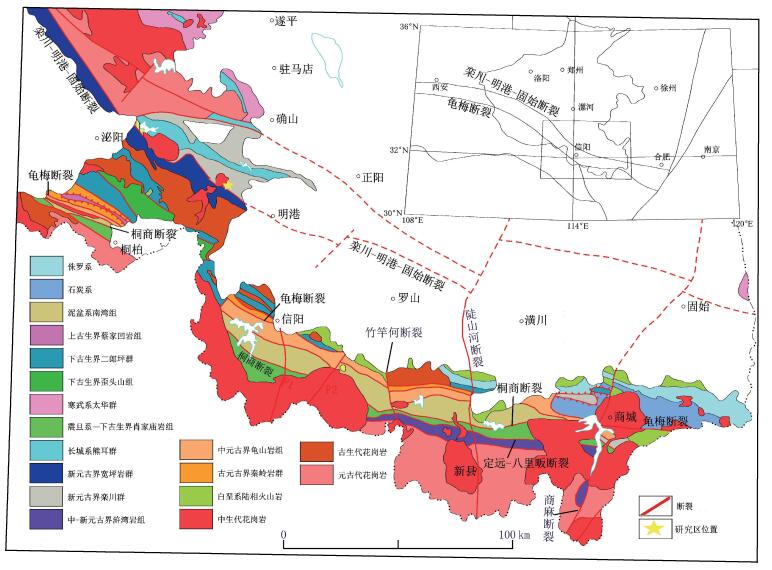
 下载:
下载:
